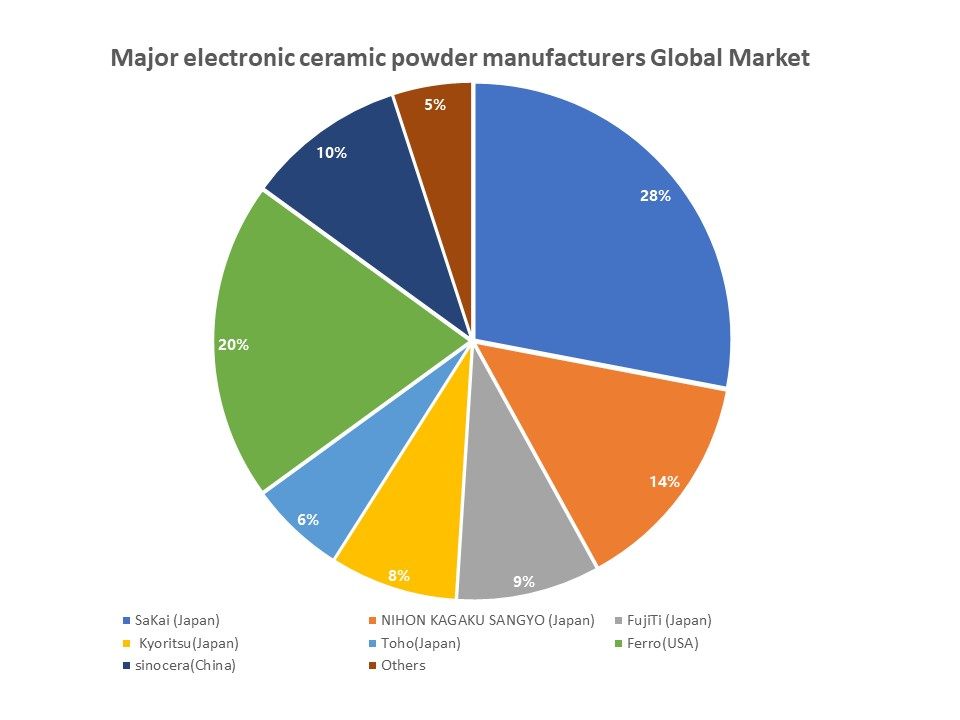Electronic ceramics industry overview
1.1 Definition
Electronic ceramics refers to ceramics that can be used in the electronic industry with electrical and magnetic properties. Electronic ceramics belong to inorganic polycrystal, which is a kind of material between single crystal and glass in microstructure, and is bonded by ionic bond and covalent bond. New functions of ceramics can be obtained by precisely controlling the surface, grain boundary and dimensional structure of ceramics.
Electronic ceramics are characterized by high melting point, high hardness and large elastic modulus, which can withstand high temperature, wear and oxidation corrosion, and have excellent chemical stability.
1.2 Application
Electronic ceramic materials are mainly prepared into high-voltage ceramics, optical fiber ceramic insert, fuel cell ceramic diaphragm plate SMD ceramic package base, alumina ceramic substrate, MLCC capacitor, microwave dielectric ceramics and other devices.
Electronic ceramics industry analyse
2.1 Key raw material
Electronic ceramic powder is the most important raw material for ceramic components. The core requirements are purity, particle size and shape. The manufacturing technology and technology of high purity, ultrafine and high performance ceramic powder is the bottleneck restricting the development of electronic ceramic industry in China.This technology is basically mastered in Japan, the United States and a few other developed countries.
Japan is the global leader in ultra-high temperature technology, and China imports most of powder of electronic ceramics.

2.2 Global electronic ceramics market competition pattern
Due to high technical barriers, the electronic ceramics industry has dominated by Japanese, American and some European companies with unique technologies. China's electronic ceramics industry has started to take shape, but compared with Japan, the United States and other economically developed countries, it is still in its infancy.

2.3 Global market scale
In 2010, the global market size of electronic ceramics was $18.13 billion, which grew to $24.14 billion in 2019, with an annual compound growth rate of 3.23%.
In 2010, the scale of China's electronic ceramics market was 21.8 billion yuan, which increased to 64.1 billion yuan in 2019, with an annual compound growth rate of 12.73%. It can be seen that the growth rate of China's electronic ceramics market is significantly higher than global market, and the demand of the whole industry is still expanding.
5G, high-power LED, IoT and other fields will bring prosperity to the electronic ceramics market.
Trend of electronic ceramics industry
Electronic ceramics is the foundation of electronic components preparation. In recent years, electronic ceramics have been widely used in the field of electronic information. The market demand expands and the prospect is broad. With the development of computers, modern communications, microelectronics, optoelectronics, robot manufacturing, biological engineering and nuclear technology, the requirement of electronic ceramics is getting higher and higher.
The development trends of the industry are miniaturization, integration and modularization, high-frequency and frequency serialization, lead-free and environmental coordination.
3.1 Miniaturization
• From the materials perspective, one of the bases for the miniaturization of the whole machine lies in the improvement of the ceramic material properties, and the development of ceramic nanocrystalline technology and related processes.
3.2 Integration and modularization
• The key to achieving ceramic integration lies in the development of LTCC materials with excellent performance and advanced co-firing technology of heterogeneous materials. This has become an important research direction in the field of information functional ceramics.
3.3 High-frequency and frequency serialization
• To meet the development demand of miniaturization and portability of communication terminal equipment, the preparation of microwave dielectric ceramics with high dielectric constant, high quality factor and low frequency temperature coefficient is the focus of research and development.
3.4 Lead free and environmental coordination
• Most of the current piezoelectric ceramics are lead-based systems based on lead zirconate titanate. It is an urgent and significant research topic to develop environmentally compatible piezoelectric iron-shop ceramics with non-lead systems.
Declaration: This article is provided by CERADIR™ users or obtained from Internet, the content does not represent the position of CERADIR™. We are not responsible for the authenticity/accuracy of the article, especially the effects of the products concerned. This article is for study only, it does not constitute any investment or application advice. For reprinting, please contact the original author. If it involves the copyright and/or other issues, please contact us and we will deal with it asap! CERADIR™ has the interpretation of this declaration.







